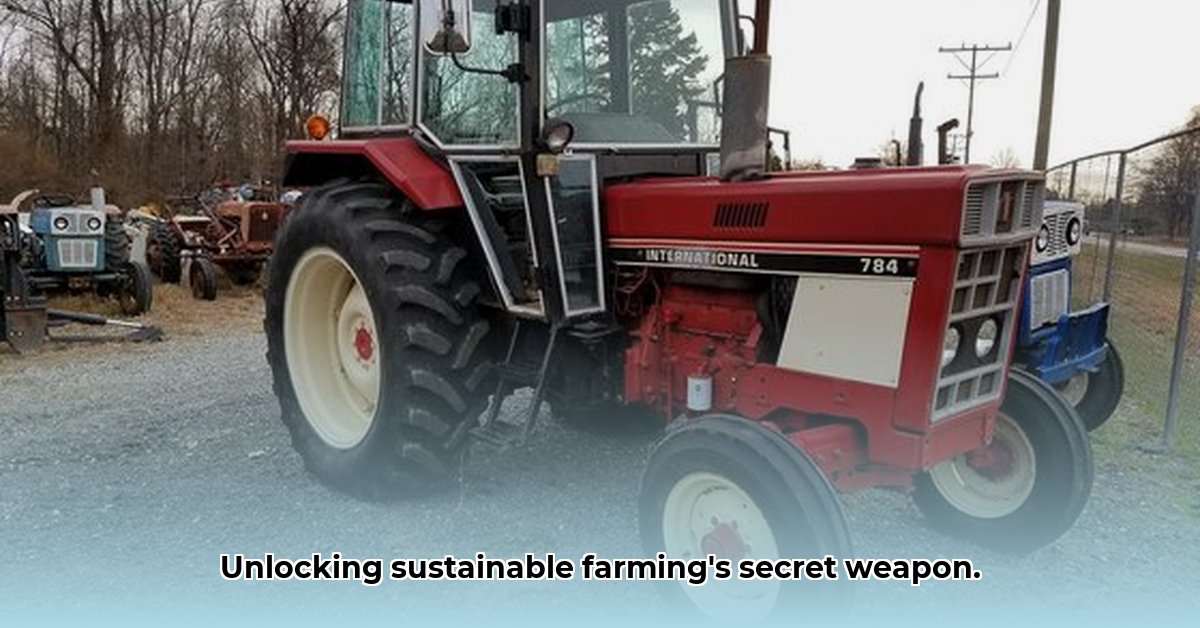
A Blast from the Past: The 784's Legacy
The International Harvester 784, a stalwart of agricultural machinery produced between 1978 and 1983, represents a fascinating intersection of history and contemporary sustainability concerns. This isn't your modern, GPS-guided tractor; it's a simpler machine, built for durability and adaptability, qualities that are increasingly valued in the context of sustainable farming practices. For more on International Harvester tractors, see this helpful resource. This review explores the 784’s potential contribution to sustainable agriculture, weighing its advantages against its inherent limitations.
Technical Specifications and Design: A Workhorse's Anatomy
The International Harvester 784, while lacking the horsepower of modern tractors (horsepower varied by model but was usually sufficient for its era), possessed a robust design tailored for its time. Its wet disc clutch (a friction clutch that operates in an oil bath, providing smoother engagement) and advanced (for its era) hydraulic system allowed for precise control. Available in row-crop, utility, and low-profile configurations, the 784 demonstrated impressive versatility, adapting to diverse farming needs. Its fuel tank, typically around 9 gallons, suggests a comparatively smaller fuel capacity compared to modern tractors. This could lead to lower fuel consumption, a significant aspect in any sustainability analysis. The tractor's construction, however, was designed for longevity, a major factor in minimizing the environmental impact of frequent equipment replacements.
Sustainability Analysis: A Balanced Perspective
The 784's potential sustainability contribution stems from its remarkable durability. A tractor that lasts for decades significantly reduces the environmental burden associated with manufacturing and disposing of new machines. Its comparatively smaller fuel tank could translate into less fuel consumed per operation, although concrete data is required to confirm this. However, a crucial drawback is the absence of modern emission control systems—a significant consideration in assessing environmental impact. While the lower fuel capacity might mean less total fuel used over its lifespan (depending on the longevity of the machine), the emissions produced would likely be less clean than those from modern tractors.
Comparative Analysis: Bridging the Generational Gap
Direct comparisons between the 784 and modern tractors are complex due to the vast technological advancements over the decades. Modern tractors boast substantially higher horsepower, advanced fuel-efficiency technologies, and sophisticated emission controls—leading to higher initial costs but potentially lower operational costs and emissions per unit of work. The 784's strength lies in its longevity and lower initial investment; however, the longer-term operational costs, including maintenance and fuel, require careful consideration.
Conclusion: Uncertainties and Future Research
The International Harvester 784 presents a nuanced case study in sustainable agriculture. Its durability and adaptability are significant assets, but a comprehensive evaluation necessitates more data. Future research should focus on:
- Quantifying fuel efficiency: Precise fuel consumption rates under various field conditions are crucial for a robust comparative analysis.
- Assessing maintenance costs: The long-term maintenance costs and the availability of spare parts significantly influence both the economic and environmental sustainability of the tractor.
- Analyzing soil compaction: The tractor's weight and design directly affect soil compaction, a critical factor in sustainable land management.
- Comparative life-cycle assessments: A full life-cycle assessment comparing the 784 with modern tractors of comparable output is essential to provide a holistic perspective.
Only through such investigations can we accurately determine the 784's potential role in creating a more sustainable agricultural future. The old workhorse deserves a thorough accounting of it’s actual ecological impact before it’s relegated to history.
Key Takeaways:
- The International Harvester 784's longevity significantly reduces the environmental impact of equipment replacement.
- Lower fuel capacity potentially translates to reduced fuel consumption – though empirical data is critical.
- Lack of modern emission control technologies creates significant environmental trade-offs.
- A holistic life-cycle assessment is necessary for a complete understanding of its sustainability.